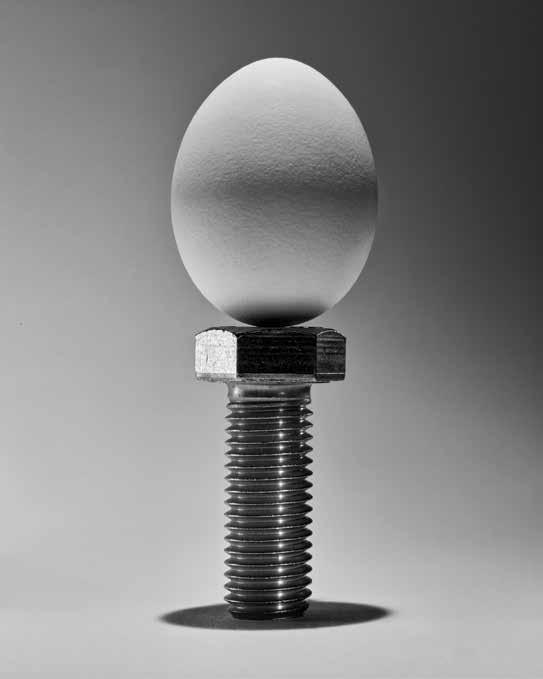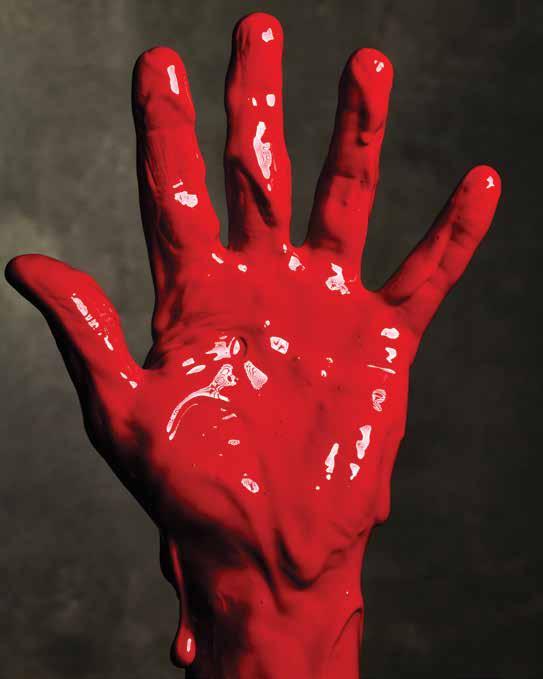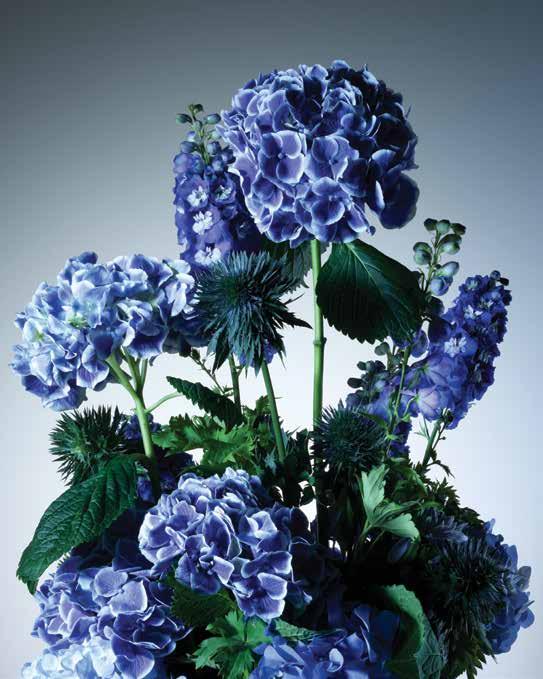


Foreword by Joe Morse
Illustrator, Professor, Faculty of Animation, Arts & Design, Sheridan College, Ontario
“This project is rooted in the hand, the eye, and lived experience. It is not a return to some long-lost craft, it is an affirmation of the essential need for process, where discovery is well-fed curiosity, and meaning emerges through making.”
—Joe Morse
This book is a compilation of a collaborative project that offered two distinct visions—one armed with pencil, pen, brush, and paper, the other with lens, light, and the physical world. Over the course of 52 weeks, the efforts of Craig Cutler and Craig Frazier converged into something more than just shared images—a celebration of the art of visual dialogue.
In a world saturated with fleeting imagery—where content is consumed in seconds and forgotten just as quickly—these weekly visual pairings offered a pause in the endless scroll. They called out for attention, welcomed interpretation, and rewarded reflection. The concept behind this visual conversation had strict rules: one word per week chosen at random, and no talking. Let the dialogue speak in the images. The result is a masterclass in creative problem-solving, where discipline and exploration inspire invention.
At the outset, I don’t think the two Craigs fully knew what they were getting themselves into. The early weeks feel like two prizefighters circling, cautiously measuring the terrain of the posted results. The images are stunning, but both of them know how formidable the other’s work is, and finding your footing in a new landscape can take time. But by week four, something shifts. They’re given a noun with a diverse visual quality, and it acts as a key that unlocks the vault of their ideas. From that point forward, the project begins to speak with a collective chemistry.
In this book, you will see brilliant examples of two fertile imaginations honed by decades of practice and informed by the rich history of visual art and graphic communication. But more than that, you’ll see process. The discarded sketches, the failed experiments, the mistakes, and the paths abandoned are the critical underpinnings that have built the final image. The finished pieces are hard-earned through experienced eyes looking for visual opportunities, an iterative discipline, and a weekly deadline that never wavered.
One of this book’s most brilliant decisions is the omission of the weekly prompt on the image pages. The curious can read the word in the Artists’ Notes pages. Without it, the viewer is free to enter without direction, to discover their own stories in the collision of the images. When two nouns collide, they result in a synthesis. Each week, new combinations emerge, narratives are created, and connections are made. One of my early favorites is week 12. Craig Frazier—a master of visual economy—offers an image with the utmost simplicity, which he guesses will sharpen the contrast between their contributions. Craig Cutler, with his unerring eye for the design of form and figure/ground, offers a glass construct of clarity and elegance. The resulting image is a perfect melding of their singular way of seeing. Amidst so many standout pairings, week 31 is another highlight—both artists distill their ideas to the essential. Cutler’s flower, a study in silhouette and absence, and Frazier’s portrait pared to its expressive detail.
Project 2 Craigs rewards repeat viewing, as each time I explore this archive, it conjures new insights.
This project is not just a record of a year of shared images; it’s a sustained conversation between mediums, thinking, and the unique approach each Craig brings to their work. It reminds us that making images is not just about output, but about intention, attention, and response. At a time when image-making is increasingly effortless, when a prompt typed in seconds can yield a dozen authorless results in minutes, Project 2 Craigs is a powerful statement of visual thinking and embodied engagement with materials. This project is rooted in the hand, the eye, and lived experience. It is not a return to some long-lost craft; it is an affirmation of the essential need for process, where discovery is well-fed curiosity, and meaning emerges through making. It is a potent reminder of what human creativity does best, transforming limitations into the limitless.
This book is both an inspiration and an invitation to look more closely, to make with purpose, and to celebrate the irreplaceable voice of the eye and human hand.


The
Story
Introduction by Craig Frazier
In March 2024, I hired Craig Cutler for a product shoot for a winery client. We had never met or worked together before.
Rather than producing the expected lifestyle shots with flowers, cheese, and half-full glasses of wine, I wanted simplicity—compositions of single bottles amidst Heath Ceramics’ renowned colorful bowls and vases. I envisioned classic still lifes, like the photographs of Irving Penn or paintings by Giorgio Morandi—a perfect Craig Cutler assignment. We spoke over the phone about my loose vision. He was enthusiastic about the project despite my scant budget. It wouldn’t afford me to travel from San Francisco to Los Angeles to art direct the shoot— something I customarily do. My absence would turn out to be a gift.
I shipped Craig a dozen vases, bowls, and a case of wine. Days later, he emailed me eight stunning photographs with ceramics playfully composed adjacent to each bottle—bowls inside bowls, supporting an upside-down vase, leaning on the bottle—each staged in sublime chiaroscuro.
Craig also created a series of still lifes featuring only the ceramics. These photographs were the product of a man with an eye and a lifetime of chops behind a camera. He didn’t need direction; he needed to be left alone.
I believe in that same solitude. I have spent the last thirty years illustrating for clients all over the world—every drawing out of my own vision, not the concept of an art director. I want to own the ideas I execute—so does Craig Cutler.
Intrigued by one of Craig’s “stacked bowls” images, I started sketching one morning while eating my breakfast. I tested myself to see how many styles I could employ to reimagine his composition. When I reached thirty, I sent them to Craig. He called the next day and said, “We’ve got to do a project together.”
The experiment.
We conceived an experiment to test our mutual penchant for ideas during that phone call. How would we perform without art direction and the obligatory trappings of commercial work? Our premise was simple: we would receive the same assignment and deadline and execute it without conference. To give our experiment breadth, we decided on 52* oneweek assignments. Adding a one-year time frame would allow us to get some practice and rhythm— and maybe break some new ground. The pace would force quick decisions. Our only constraints would be self-imposed. As we said from the beginning, “We have no idea what we are doing.”
We made the weekly assignments simple: one word, a prompt to illustrate and photograph it in any way we wanted. Craig and I each came up with a list of 52 words and sent them to my son’s girlfriend. Every week, she randomly drew a word from a Pyrex cup and emailed us our assignment. At the end of the week, we placed our images side-by-side, posted them to our website, and received a new word: no conversation allowed.
Craig and I spoke few words, except for the occasional text. You see, we have never met in person. Months into the project, we were both smitten with the unfolding creative alchemy—we knew we couldn’t meet and risk jinxing the magic. In keeping with that theme, we wrote everything in this book independently, without conference or reading the other’s words.
After the project had officially ended, we continued to suspend our first meeting. In fact, Craig staged and directed my portrait for this book and left the click of the shutter in his wife’s able hands. We intend to finally meet when we present our story at the AIGA National Design Conference in October 2025. We also plan to toast our grand experiment— and a new comradeship.
*We continued the project for an additional four weeks for a total of 56—all included in this book.














Craig Cutler
Craig Cutler has operated his photography studio since 1987 to the present. He is commissioned worldwide for editorial, advertising, and corporate assignments. Craig lives and works in Santa Monica, California.
Craig’s meticulous combination of craft and style brings an element of art to his work as a director and photographer. Conceptual thinking lays the foundation for his approach as a director and photographer.
At the time of this book’s publication, Craig’s exhibition titled Collective Knowledge from Our Changing World is on view at the Natural History Museum of Los Angeles.
Recent awards include the Cannes Lions Grand Prix, Graphis Platinum Photography Award, Communication Arts and American Photography annuals.
craigcutler.com
Craig Frazier
Craig Frazier has been a designer and illustrator since 1978. His work is recognized internationally for its wit, surprise and simplicity. He is commissioned worldwide for editorial, advertising, and corporate assignments. Craig lives and works in Mill Valley, California.
He is a frequent contributor to The New York Times and business publications such as Harvard Business Review and The Wall Street Journal. He has an extensive roster of corporate clients, including the US Postal Service, for which he has designed seven postage stamps.
Craig published his second monograph, Drawn (Goff Books), in January of 2024 following his first monograph, The Illustrated Voice (Graphis Press) in 2003. He is also the author and illustrator of twelve children’s books.
craigfrazier.com
Acknowledgments
We would like to express our deepest gratitude to the people who have supported and helped bring this project and book to life.
—CC & CF
Liz Bagala. Thank you, Liz, for being the keeper of the secret words and dutifully dealing us our weekly assignment. Thank you also for your assistance in building and maintaining our website (2craigs.com) and our Instagram.
PRINT. Thank you, PRINT, and your devoted staff for supporting our project since day one. Thank you Debbie Millman, Amelia Nash, Kim Tidwell, Charlotte Beach, Zachary Petit, Laura Des Enfants, and Deborah Aldrich, for your words, referrals, and promotion of Project 2 Craigs
Joe Morse. Thank you, Joe, for your insightful and articulate analysis of this project. You have lifted the hood on a deeply personal project and identified its relevance to today’s creative world.
Kim Tidwell. Thank you, Kim, for your deft editorial skills, appreciation of this project, and knowledge of the subject. Your contribution to the tone and authenticity of our story will ensure its greatest reach.
Gordon Goff. Thank you, Gordon, for your immediate acceptance and support, and for throwing your team behind its speedy publication. You have enabled a meaningful record of Project 2 Craigs in design history.
Jake Anderson. Thank you, Jake, for your expertise and steady hand in getting this book off to press and into the hands of the public in short order.
Adrienne Bell. Thank you, Adrienne, for pressing the shutter on my portrait for team Cutler. -CF

